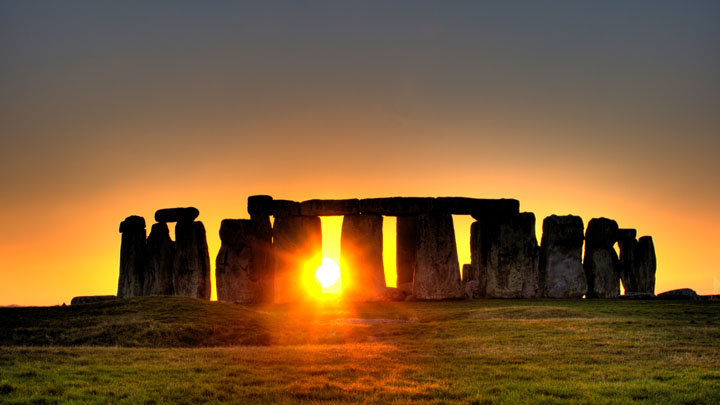Mysteries of south England: Stongehenge, Avebury and Silbury

65 kilometres south-east of Bath and 170 kilometres south-west of London lies Stonehenge, at the heart of iron-age Britain, a stone circle famous throughout the world. No one really knows what its purpose was or how it was built, though there have been many ‘educated’ guesses over the years. Some say it is some sort of calendar, others a temple dedicated to the sun, mainly because its orientation means it points directly at the rising sun at the time of the equinox, and there are even those who believe it might be some sort of computer. The actual construction of the place appears to have been accomplished over more than a thousand years, rather than being one single effort, with bits ‘added-on’ until it reached its final configuration. The major stones of the site are truly enormous, all over twelve feet tall above ground and almost as much underground, presenting two problems for the modern archaeologist: how were they erected and how were the stones, most of which came from Wales, 200 kilometres away, brought to the site?
Unfortunately, you’re not permitted to wander about among the stones nowadays because of wear and tear, but it is still well worth a visit, especially if you complement it by going to some of the other famous sites nearby. Another famous stone circle, just 20 kilometres north of Stonehenge, is Avebury, the largest Neolithic Circle in Europe, with many stones still standing and a whole modern village situated inside. Another of the great mysteries, just a few kilometres south of Avebury, is Silbury Hill, one of those places where no one really has any idea as to its purpose. Excavations have been carried out right to the centre of the pile but there appears to be nothing hidden in there! Back nearer to Stonehenge, just a few kilometres to the east, lies Woodhenge, larger than Stonehenge but, as the name implies, it was made of wooden posts and little is left apart from the marks where the posts were. There are many other interesting sites like these for the ‘pre-history’ buff, far too many to mention in a short article like this, but should you go to this part of the world, you can get a mass of information while you’re there.
But this part of the world isn’t just Stonehenge! Travel to the south coast and you’ll find the fishing and tourist town of Weymouth, largely built in the 1800s, when George III fell in love with the place and built himself a magnificent home there. The whole promenade is comprised of Georgian buildings, looking almost as if they had been transported from Bath – most of them are guest houses today, though they once contained some of the wealthiest people in England each summer. Weymouth boasts a busy fishing harbour, both commercial and recreational, with many professionals waiting with their boats to take casual anglers out for a day of excitement, and sometimes, even fish! Like many beaches along the south coast of England, (but by no means all), the one at Weymouth is pebble and travel just a few kilometres west from Weymouth, passing Portland Bill on your way, and you will come to Chesil Beach, with sea on both sides and where, as I said in a previous article, the locals can tell by the size and colour of a pebble collected from there, just where it was found!
Turn back to the north from Weymouth and you will find historic market town of Dorchester in the heart of another area steeped in ancient history. Just to the south-west of the town lies Maiden Castle, the largest Iron Age hill fort in Europe, while to the north is Cerne Abbass, the giant, stylised figure of a naked man, carved into the white chalk of a large hill. Then back to Dorcester, where many Roman artefacts are on display and a large part of the Roman wall that surrounded the town is still visible.
Word limitations force me to stop in Dorchester, but please bear in mind that this article is really only intended to give a quick sketch of the area. A whole book could be written just on Wiltshire and Dorset (and I wouldn’t be at all surprised if one has!), so if you ever end up there, be sure to just follow your nose and allow yourself to wander – there’s something to be seen anywhere and everywhere in this history-rich countryside! In my next article, I hope to take you deeper into the West Country, with its Cornish pasties, Somerset cider and ultra-narrow roads! It could be fun!
Have you ever been to Stonehenge and southern England? What did you love most? Or if you haven’t, would you go? What would you like to see first?









 Proudly Australian owned and operated
Proudly Australian owned and operated